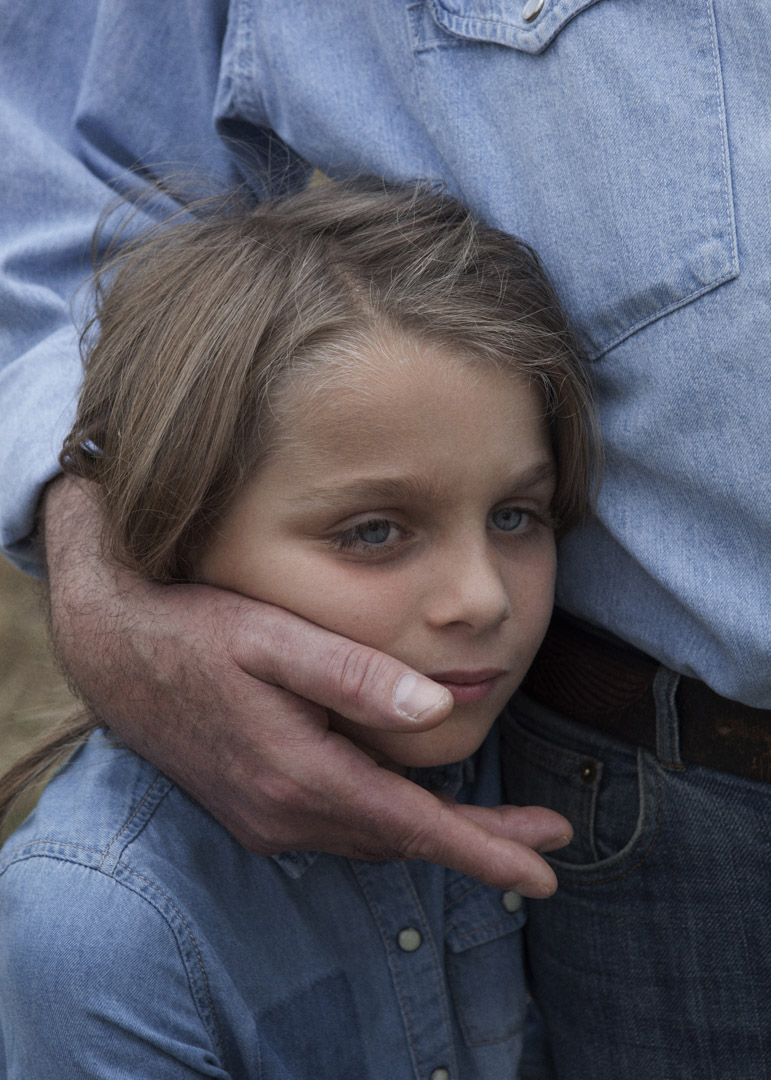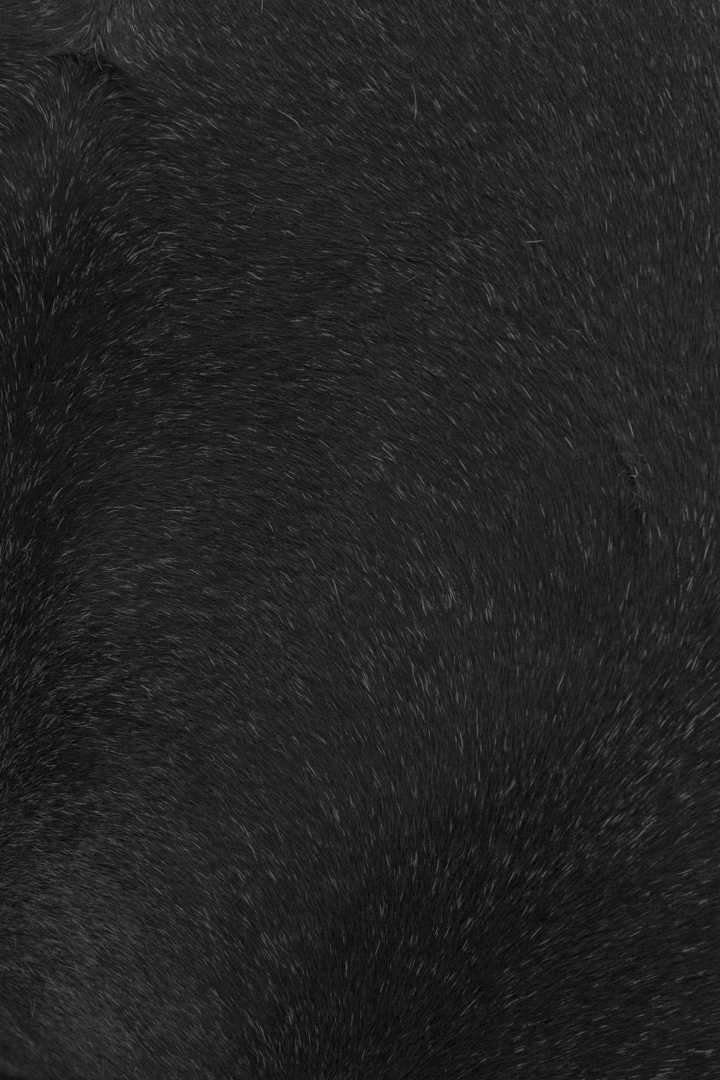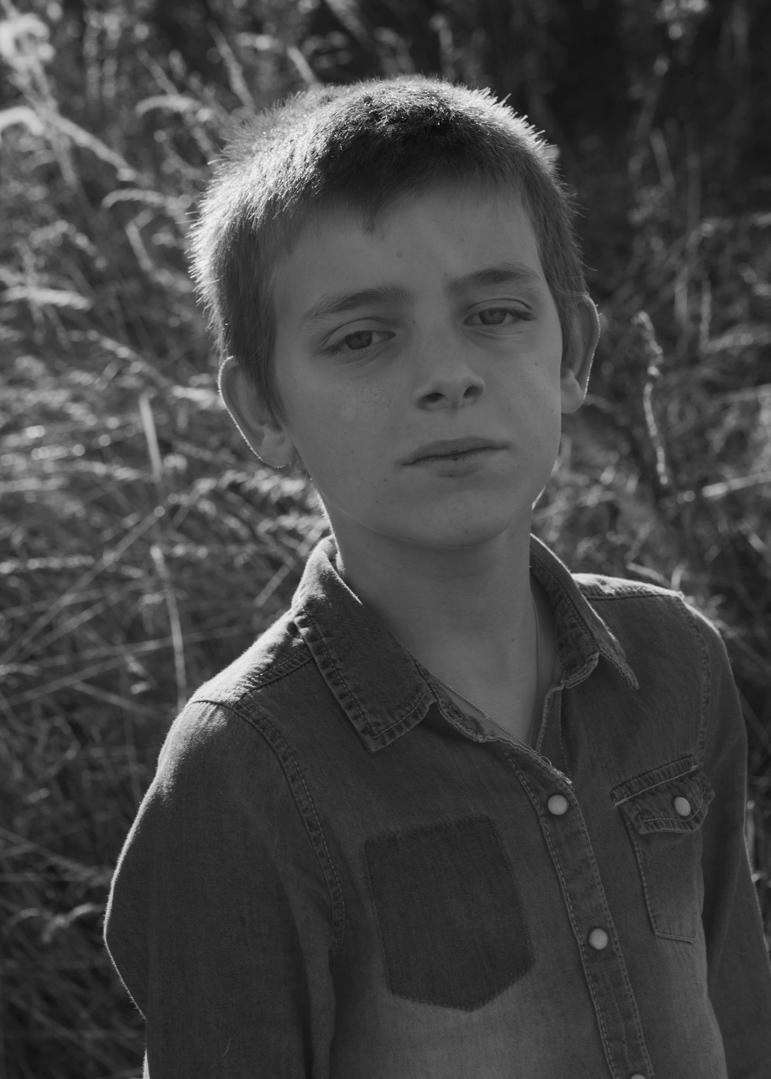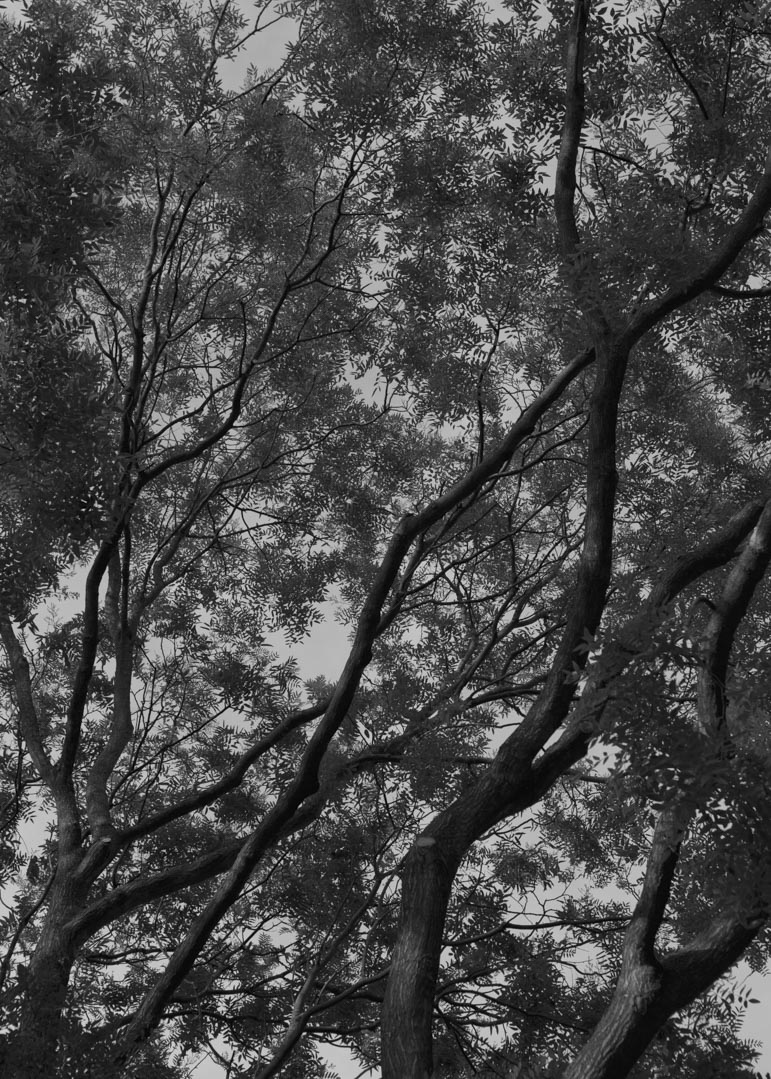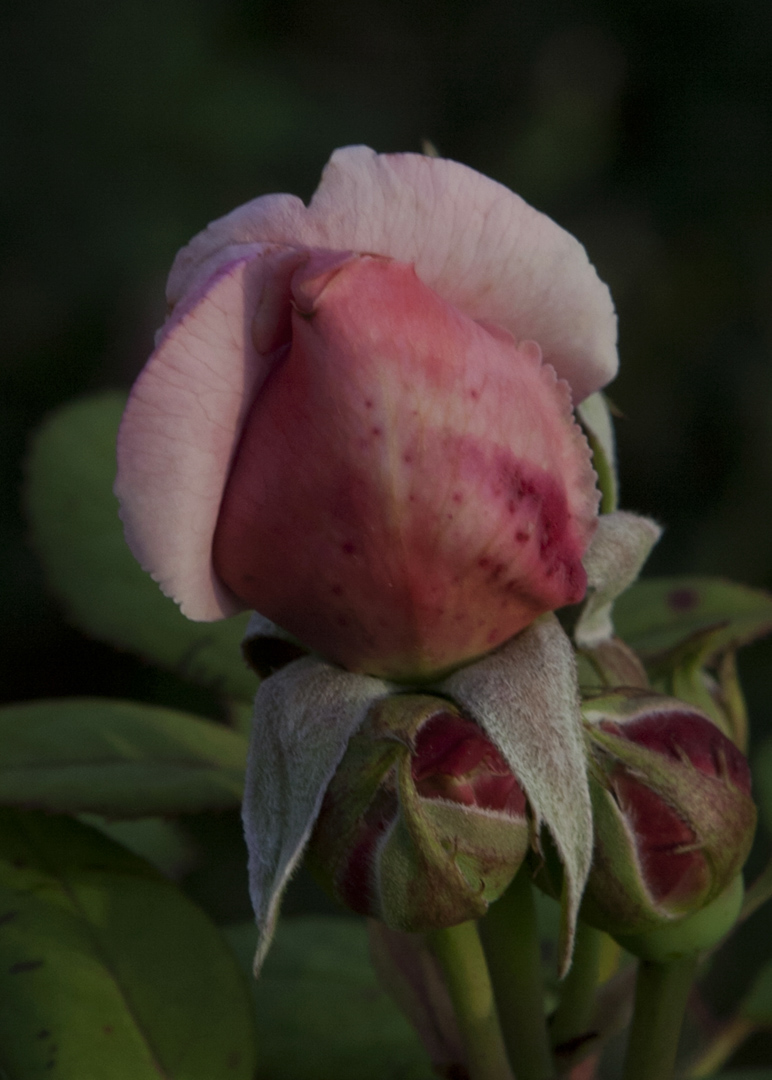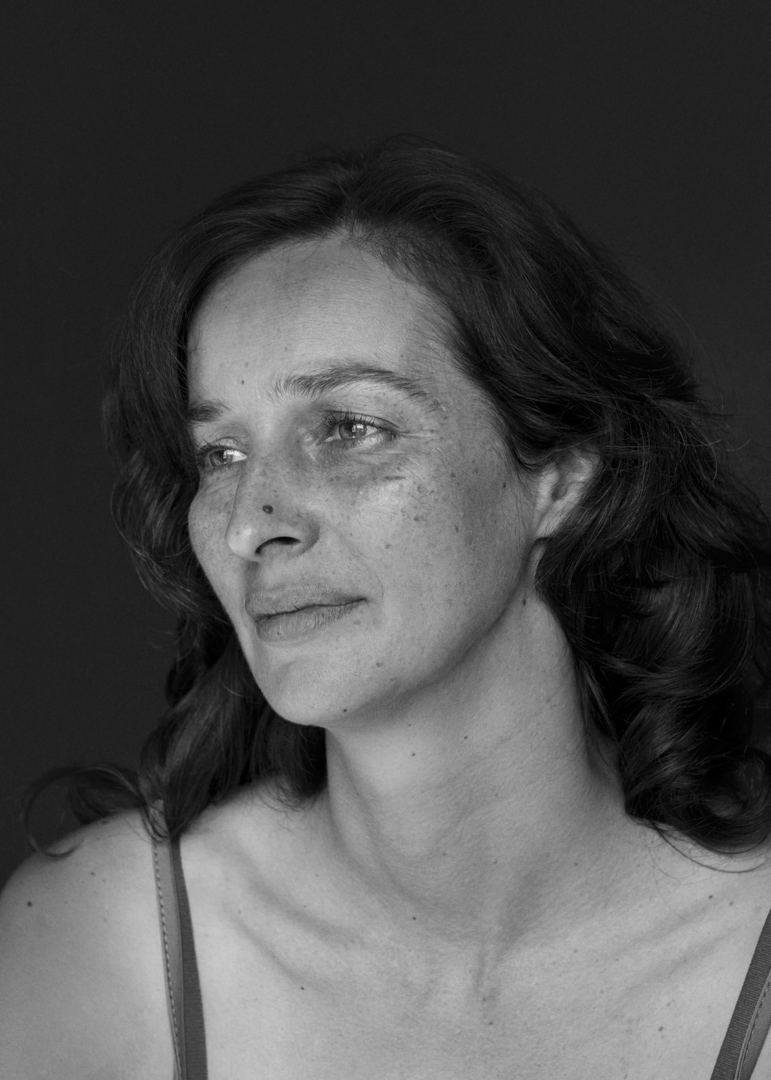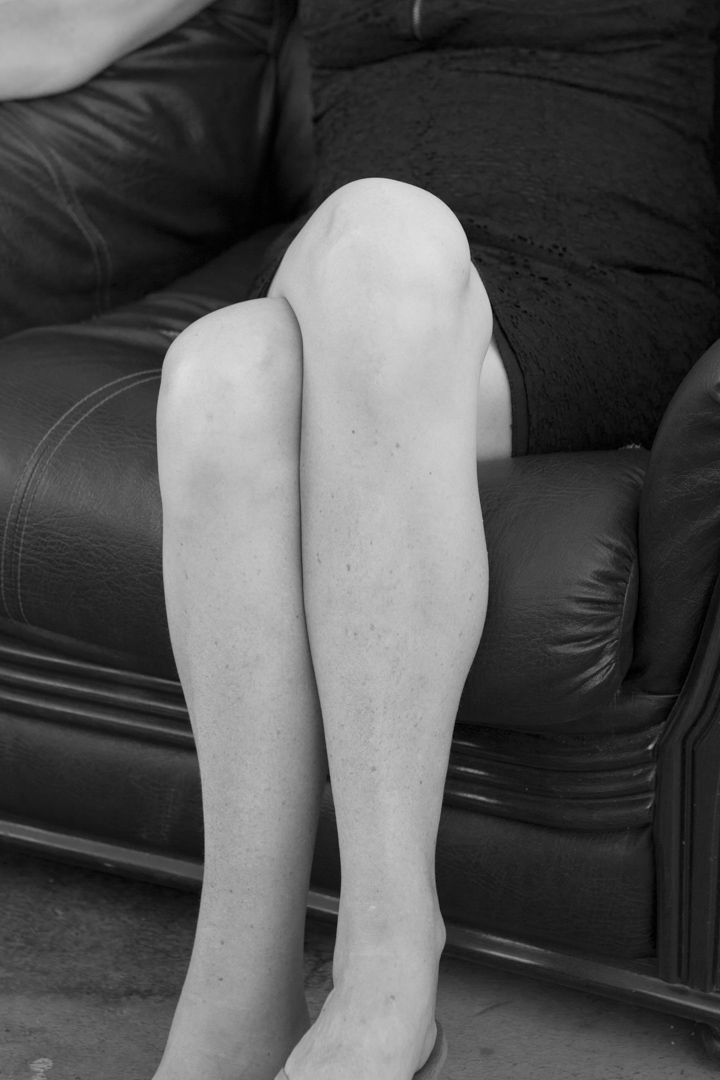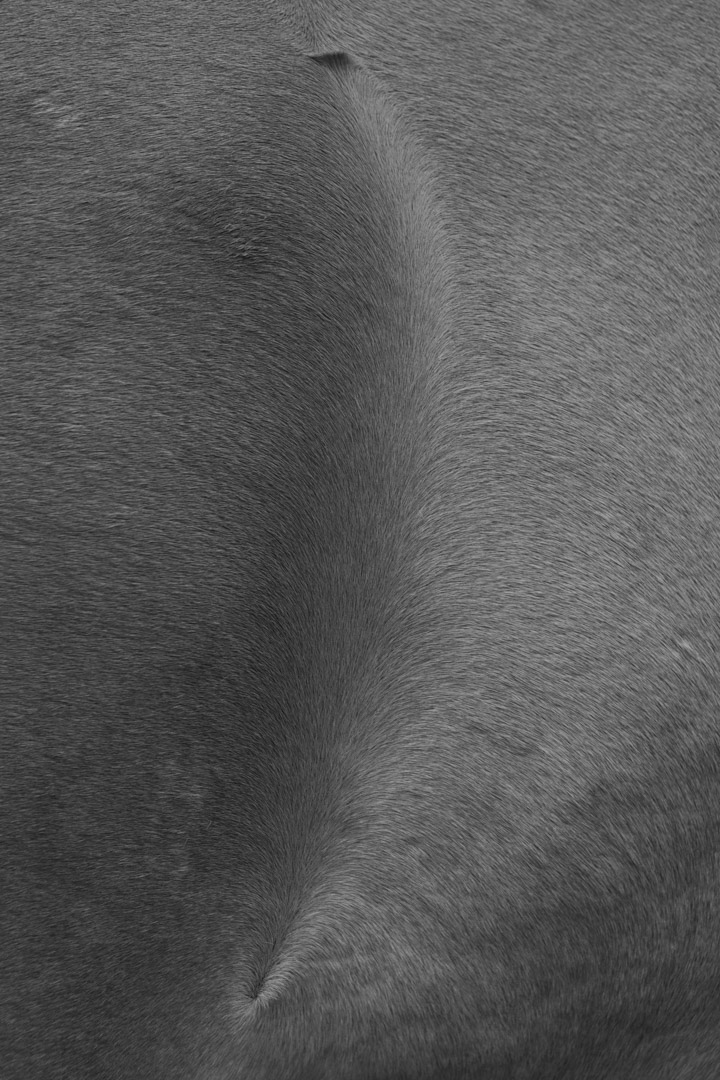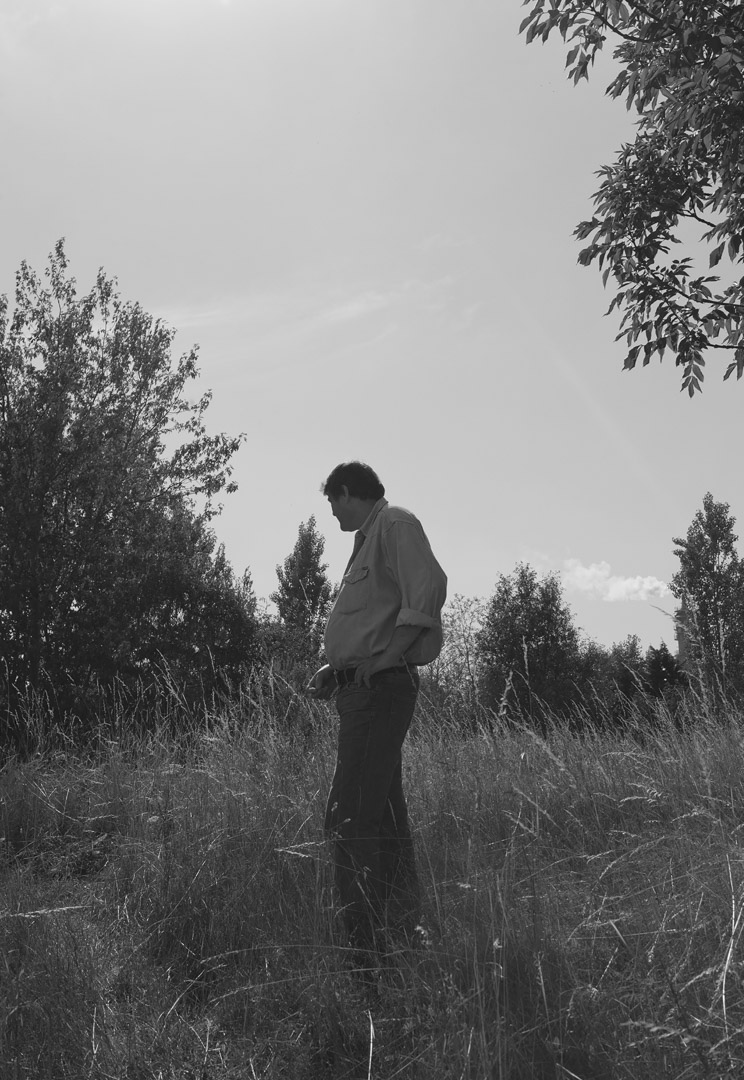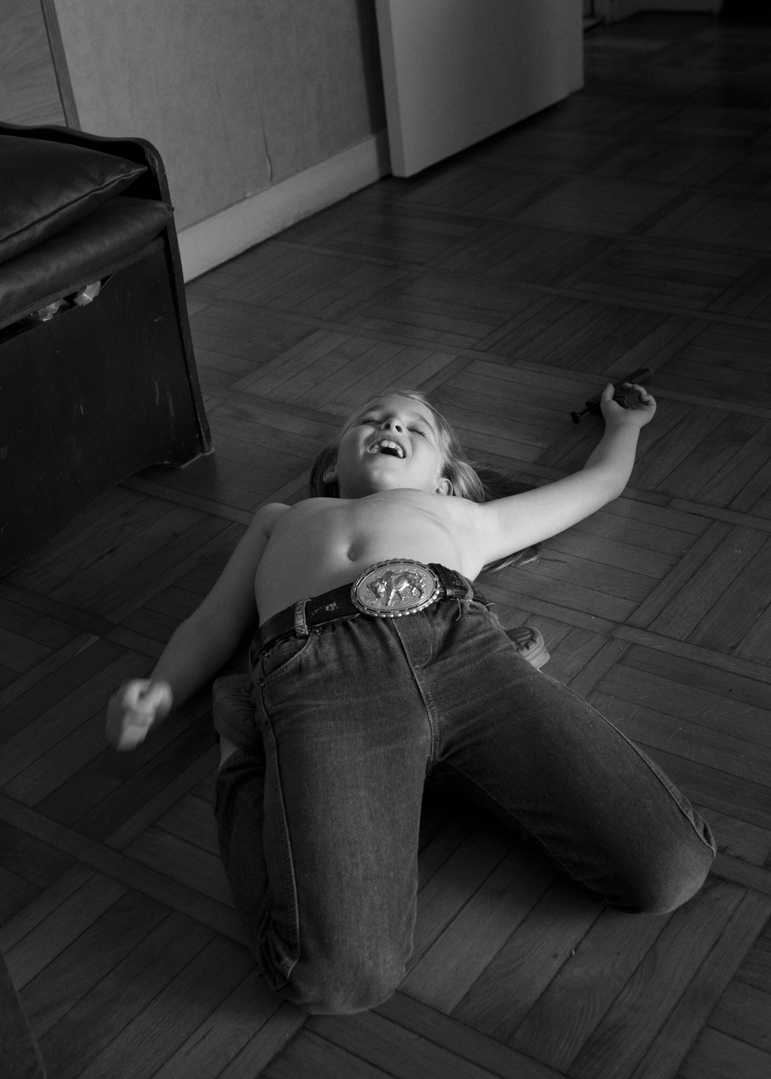Diego, 2015
These photographs were taken during a creative residency in Grand Quevilly (on the outskirts of Rouen) at the invitation of La Maison des arts in the summer of 2015 as part of the solo exhibition “Devenirs” in October 2015, which included four of my works (Va t’en me perdre où tu voudras, Ar gouren, La ritournelle, Diego).
On the opposite side-walk, I notice a little boy with long hair dressed all in jeans, his waist tight with a big buckle belt. Don’t let him get away. “You look like a little cowboy who’s lost his hat.”
Diego smiles shyly, his long eyelashes covering large blue eyes filled with melancholy like those of Charley Toorop’s characters. I accompany him to his father’s house. A dog barks without stopping, the kind of oedipal dog that invites us to regress; nobody tells him to shut up. Diego looks like his mother, he is dressed like his father.
The formidable man has a wooden back, he sits in the only armchair in the room with its slashed walls, tilts his head forward, his glazed squinting eyes stare at the overly grey sky and his body dozes off without me noticing.
The series is situated between fiction and reality, evoking the history of the town when it became too small to receive foreign labour after the war, mixed with the daily life of the town’s resident Gomes. The horse breeders, among others, were expropriated and settled in the surrounding communes, the Hauts Fourneaux were built and organised into seven workers’ housing estates. The Navarres paper mills, Saint-Gobain, La Grande Paroisse, Les Chantiers de Normandie, Miguel’s grandfather and father, pictured here with his two young sons Diego and Antonio, were immigrants and Portuguese workers. Today, most of the inhabitants live in social housing, located around a meander on the left bank of the Seine, surrounded by ammonia factories classified as SEVESO.
An unbound newspaper was published in 200 copies (out of print).
